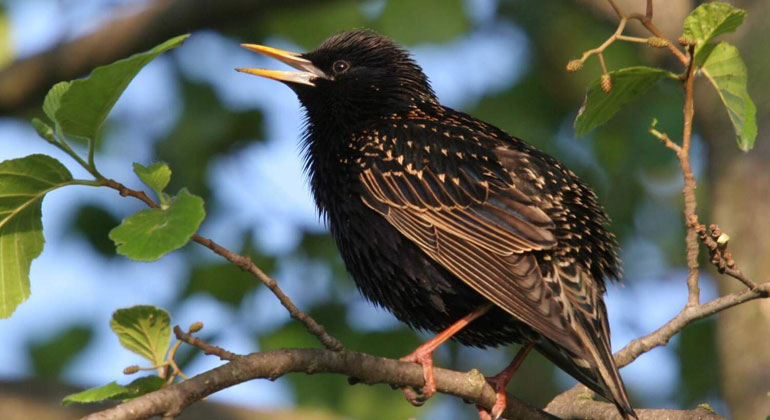Not yet silent spring: shifting sounds of birdsong
Natural sounds, and birdsong in particular, play a key role in building and maintaining our connection with nature. Birds have been declining due to changing land use and climate change. But how has this affected the dawn chorus around us? Has the loss of species also led to an impoverishment of the background birdsong in our landscapes? An international research team with participation from the University of Göttingen combined world-leading citizen science bird monitoring data with sound recordings of individual species in the wild to construct the soundscapes of more than 200,000 sites over the last 25 years. The study reveals that the sounds of spring are changing, with dawn choruses across North America and Europe becoming quieter and less varied. The research was published in Nature Communications.
Annual bird count data from the North American Breeding Bird Survey and Pan-European Common Bird Monitoring Scheme sites were combined with recordings for over 1000 species from Xeno Canto, an online database of birdcalls and songs, to reconstruct historical soundscapes. The acoustic characteristics of these soundscapes were then quantified using four indices designed to measure the distribution of acoustic energy across frequencies and time. These indices are driven by both the complexity and variety of the song across contributing species, and also quantify the diversity and intensity of each soundscape as a whole.
Researchers at the University of Göttingen’s Department of Conservation Biology work in close collaboration with Dachverband Deutscher Avifaunisten (DDA). They contribute analytical expertise to identify drivers of changing bird populations based on the millions of records about birds collected in Germany thanks to the DDA. The DDA, an alliance of ornithological associations in Germany representing 11,000 ornithologists and birdwatchers, runs nationwide citizen-science programs. This includes the Common Breeding Bird Survey, in which every year volunteers gather data about a hundred bird species across 1700 field sites between the North Sea coast and the Alps.
Johannes Kamp, Head of the Conservation Biology Department at Göttingen University, explains: “The analysis suggests a widespread decline in the acoustic diversity and intensity of natural soundscapes across Europe, driven by changes in the composition of bird communities. In Germany, we have lost large populations of species with characteristic voices like the skylark and the lapwing, sounds which symbolize the joy of spring. Agricultural landscapes, in particular, have become much quieter.”
The researchers found that sites that have experienced greater declines in either total abundance and/or species richness also show greater declines in acoustic diversity and intensity. In addition, there are other factors at play, such as the initial structure of the bird community, or how the call and song characteristics of each species complement each other. The benefits of contact with nature and species-rich landscapes are well known. They include improved physical health and psychological well-being. “We have to stop the decline of bird populations. Expectations have shifted and today’s depleted soundscapes are already perceived as normal among the younger generation. We cannot allow a further deterioration without risking negative effects on public health,” says Sven Trautmann, coordinator of the monitoring of common birds at DDA.
An example soundscape is available at:https://owncloud.gwdg.de/index.php/s/kk6cCa0sL4AZ7SE(data owners: University of East Anglia, Simon Butler, and https://www.xeno-canto.org/)
Original publication: Morrison CA et al. ‘Bird population declines and species turnover are changing the acoustic properties of spring soundscapes’. Nature Communications 2021 (online). DOI: 10.1038/s41467-021-26488-1, Online access: https://www.nature.com/articles/s41467-021-26488-1








